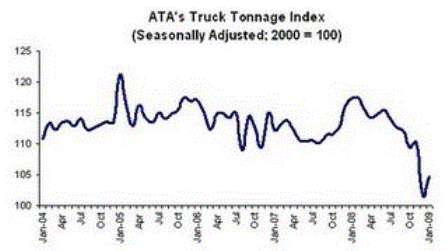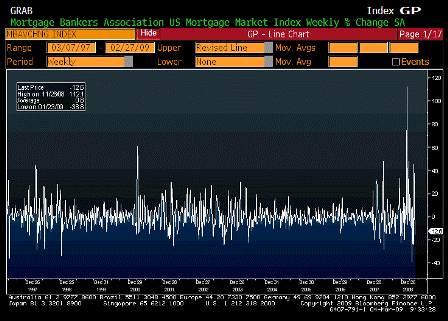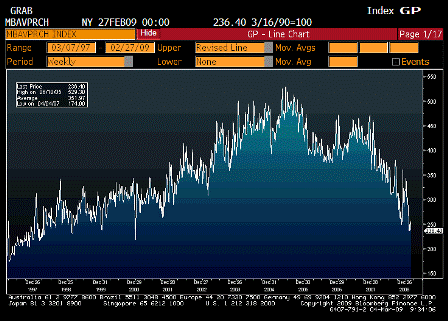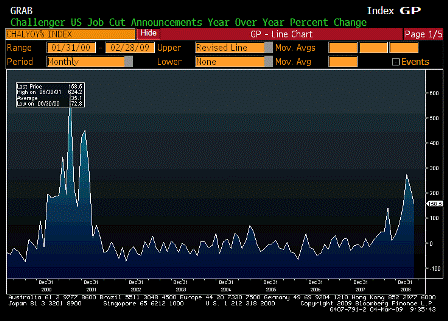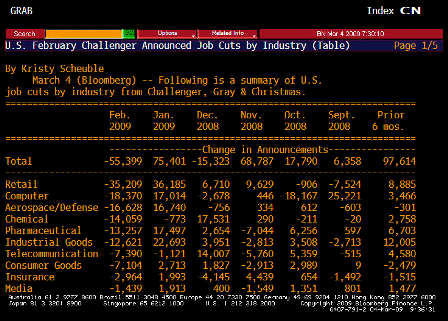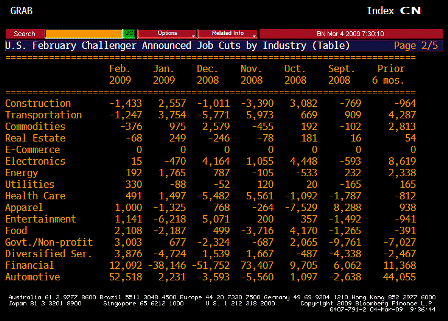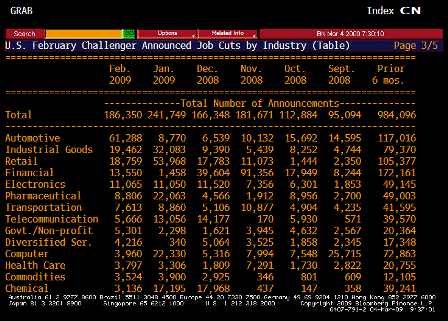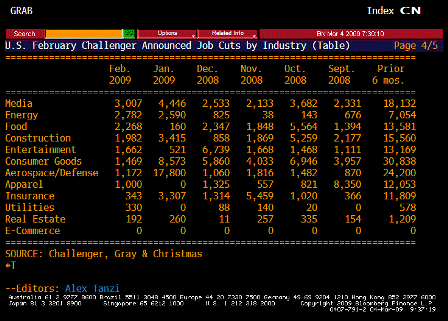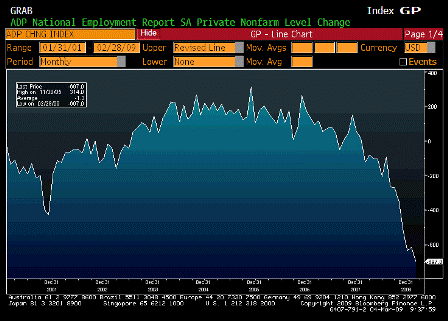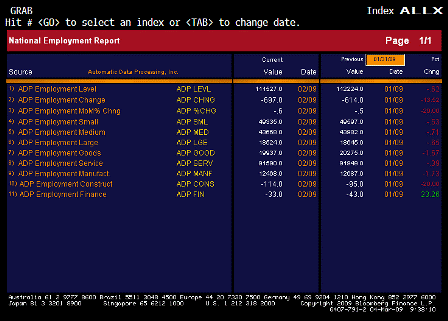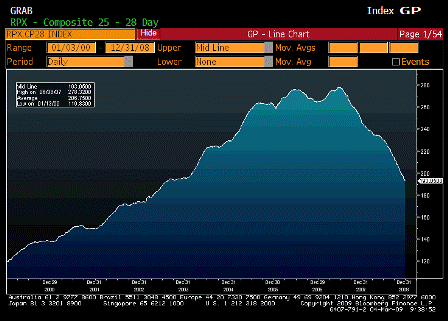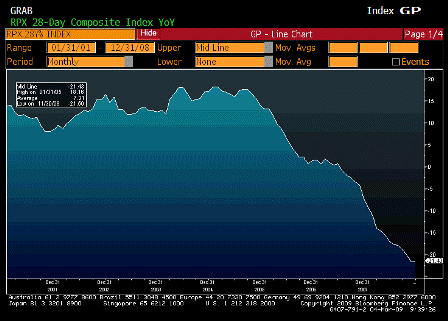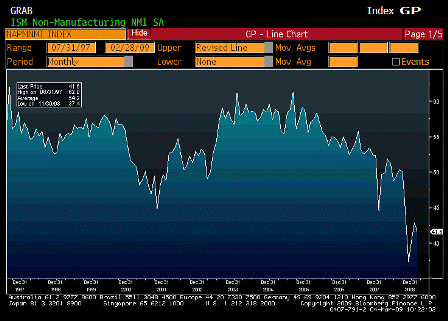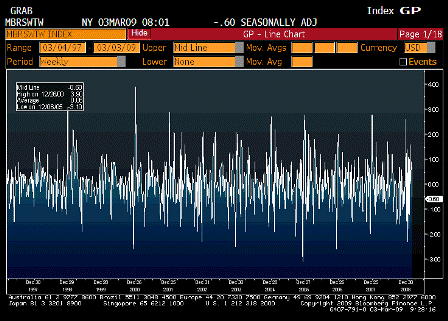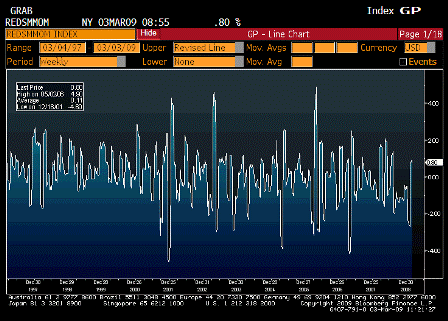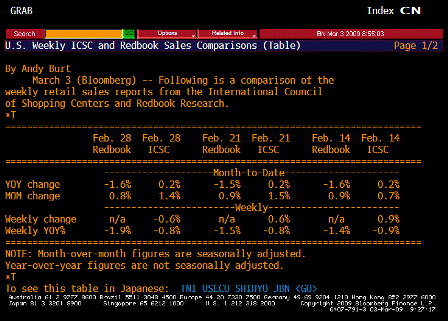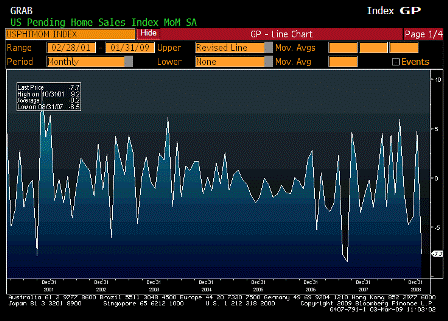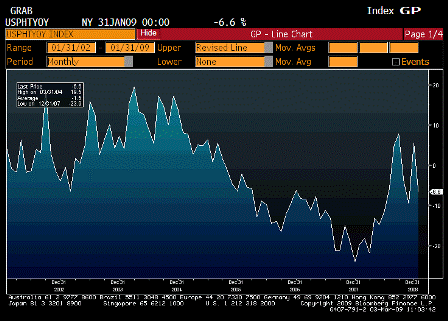Seems the prospect of euro nations going to the IMF has struck a raw nerve.
No doubt any plan to access ECB funding would include some kind of austerity condition similar to what the IMF would require.
This would weaken aggregate demand in the entire region.
They must be a lot more worried about a default than they are letting on.
>
> On Wed, Mar 4, 2009 Dave wrote:
>
> Greece just sold Eur7.5bn 10 yr bonds 50bp cheaper on ASW levels from 2 days ago…..
>
> ”Euro area members will not default. Without getting into the details, European
> Commissioner for Economic & Monetary Affairs, Joaquin Almunia, confirms that there
> exists a solution for euro area member states threatened with default. As our FI strategists
> pointed out in their 2009 Outlook piece in December, despite the Maastrich Trearty “no
> bail out” clauses, Article 122 of the EU Treaty allows financing of member states in
> exceptional circumstances. Almunia doesn’t want to flesh out how this financing would
> work, but at least he is verifying that a financing facility exists for struggling euro zone
> members.
>
Eurozone can bail out members if needed – Almunia
by Jan Strupczewski and Marcin Grajewski
Mar 3 (Reuters) — The euro zone has a way of bailing out its members if they face a crisis before they have to seek IMF help, but this must remain confidential, European Monetary Affairs Commissioner Joaquin Almunia said on Tuesday.
Although no bailout possibility existed under European Union laws for euro zone countries, there was a solution that could be used, Almunia told a seminar.
“If a crisis emerges in one euro area country, there is a solution…
Before visiting the IMF, you can be sure there is a solution and you can be sure that it is not clever to talk in public about this solution,” he said.
“But this solution exists. Don’t fear for this moment — we are equipped intellectually, politically and economically to face this crisis scenario, but by definition these kinds of things should not be explained in public,” he said.
German Finance Minister Peer Steinbrueck said in February that although EU rules said countries should not help each other within the currency area, all members of the bloc would have to help “if it came to a serious situation”.
In the same speech he mentioned Ireland as being in a “very difficult situation”. Other euro zone countries such as Greece have seen their bond spreads over Germany widen, reflecting worries about rising budget deficits and sparking market speculation about the possible break-up of the euro zone.
Almunia reiterated on Tuesday no such option existed. “The probability of this happening is zero. Who is crazy enough to leave the euro area?
Nobody.
How many candidates to join the euro area I know? A number that is bigger than last year,” he said.
German Foreign Minister Frank-Walter Steinmeier also said on Feb. 20 that a process had begun to consider how financially strong euro zone nations could help weaker members, though it was too early to say what measures might be taken.
[top]

